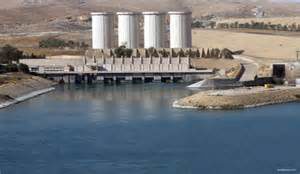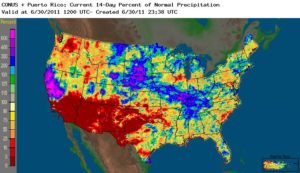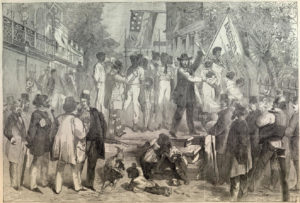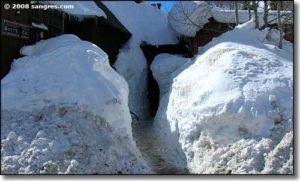
Mosul Dam
This story relies on a report by Dexter Filkins in the New Yorker magazine. Mr. Filkins, a Pulitzer Prize winner, is one of the best writers covering the Middle East.
The Fertile Crescent, where civilization developed, exists because the Tigris and Euphrates rivers flow from mountains in Lebanon and Turkey to the Red Sea. The terrain along and between the rivers is relatively flat making agriculture feasible. The rivers flood every spring, bringing water and new sediment to the region. Those conditions support a significant population, but annual fluctuations have always created problems for the people living there. During drought years, crops fail and famines ensue. Wet years bring flooding which displaces people and affects farming.
These conditions prevail in every arid region dependent on irrigation for farming. The Nile, the Fertile Crescent, and the Colorado river are prime examples. In all three regions, the political system has chosen to attempt to regulate the annual fluctuations in the river. The solution? Dam the river, store water for dry years and catch excessive runoff in wet years.
Glen Canyon Dam and Hoover Dam on the Colorado, Aswan High dam on the Nile, and the Mosul dam on the Tigris are the attempts at a solution. So, they decide on a dam upstream of the people, hire geologists to recommend a good location, and hire engineers to design and build the thing.
This worked, to a degree, on the Colorado and the Nile. Not so well on the Tigris. The geology above Mosul with its 2.5 million people is a jumble of sedimentary rocks formed in conditions similar to today. That means flat coastal areas are intermittently flooded by the sea or nearby rivers. The water evaporates, leaving the minerals dissolved in the water. That means salt, gypsum, limestone, and a mixture of soluble minerals and mud called marl.
The layers are deposited in flat layers, but Middle East geology is like Middle East politics, a big jumble with forces pushing from several directions. Above Mosul, it is quite a jumble, but sinkholes have always formed as water dissolves the soluble minerals, leaving voids that collapse. It is called Karst topography. Florida is a prime example, a limestone peninsula in a wet climate surrounded by water. It rains, the water sinks in, dissolves the limestone, and goes to the sea. Florida is dissolving, the rock resembling a sponge.
The rock above Mosul has both limestone and gypsum. Gypsum is a sulfate mineral that is called plaster if pretty dry, wallboard if more hydrated, goo if very wet, and then dissolves. The geologists said “No, no dam, it will fail”. The politicians then talked to the engineers who said “it isn’t good to build here, but we can make it work”.
Now, engineers make their money by designing and building stuff, whether asphalt, steel, concrete, earth, or software. They seldom say “no, we can’t do that”. They would be breaking their rice bowl. So they proposed grouting the rock below and under the dam with concrete to keep reservoir water from dissolving all that gypsum, which is much more soluble than limestone. They built a grout curtain under the Dam site, but it wasn’t perfect. There were gaps. They built the dam, and the increased pressure from the water in the reservoir started dissolving the gypsum at a higher rate.
Sinkholes developed below the dam before it was built. They put a big long room made of concrete called a gallery at the base of earthfill dam. Where their tests show a void is developing, they drill a hole in the floor of the gallery. Water shoots out, confirming there is a big hole down there. They then use big pumps to pump grout into the hole until it stops, hoping the void is filled. They then move to the next place.
This has been going on since the dam was built in the 1980’s. All that concrete pumped below the dam has not stopped the leakage, it just moves the leaks to another weak spot. They will never be able to pump enough grout. An Italian firm is there now, and they are a bit hopeful they can control the leaks. The confounding variable is the political situation. ISIS controlled the dam for a while, and grouting mostly halted, but void creation did not. The battle lines of the war today are within earshot of the dam. The Iraqi government is unstable, despite support from shifting coalitions. The grouting program is at risk. Maybe that doesn’t matter. The dam will fail, we just don’t know when.
Sixty feet of water will inundate Mosul. Refugee camps with 1.2 million people will be affected. In two days parts of Baghdad would be under sixteen feet of water. Downstream, an even wider area would be flooded with at least six inches of water. As geologists always say, “It’s not a matter of if, but when.” Death toll estimates range from 500,000 to 1.5 million souls. The Iraqi economy will be destroyed. Moral, listen to the geologists.



